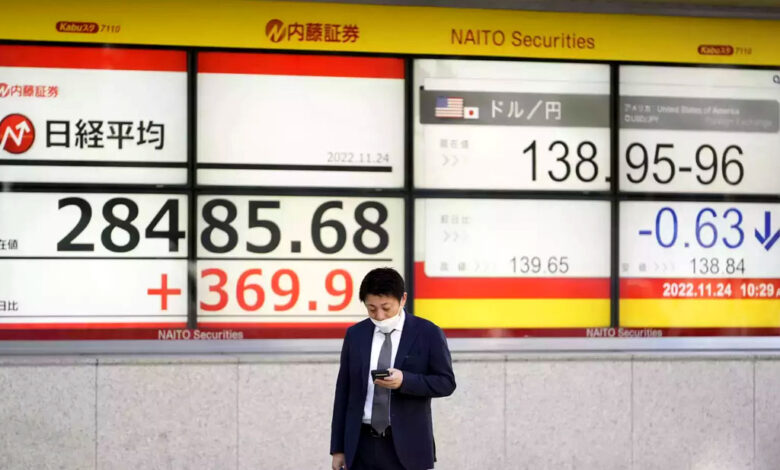Asian Stock Markets Cautious Over Inflation Threats from US and China

The Asian stock market was walking on eggshells this Monday, caught in the headlights of a mixed bag of employment reports from Uncle Sam’s land. It led to a surprising surge in the battered bond market, but there’s still a long and winding road ahead. Tensions are high, with the upcoming U.S. and Chinese inflation data on the horizon.
The comprehensive MSCI index that tracks Asia-Pacific shares, excluding Japan, took a slight dip in a slow-moving market. The past week had already seen it fall by a solid 2.3%.
Japan’s Nikkei was treading water, buoyed by its previous month’s low point. The recent summary from the Bank of Japan suggested a flexible yield policy might give their super-charged stimulus a new lease on life.
On the other hand, Chinese blue-chip stocks slumped a bit, down by 0.9%. Investors seem miffed, yearning for more substantial and decisive steps to boost the economy from Beijing.
A look at Europe shows a similar story. EUROSTOXX 50 futures took a 0.3% hit and FTSE futures slipped by 0.5%. The tables turned, however, with the S&P 500 futures gaining 0.3% and Nasdaq futures up by 0.5%.
With nearly 90% of S&P 500 earnings out in the open, the results have exceeded expectations by 4%. Over 79% of companies even managed to surpass Wall Street’s predictions. Big players, like Walt Disney and News Corp, are expected to announce their results soon.
Now, the upcoming U.S. consumer prices data is anticipated to reveal a minor uptick in headline inflation, up to 3.3%. However, the key core rate is expected to cool down to 4.7%.
Folks at Goldman Sachs foresee the numbers going down, partially due to a decrease in car prices. This could be a lifeline for the bond market, helping it keep its momentum.
In China, all eyes are on signs of deflation, with consumer prices expected to drop by about 0.5%, and producer prices down by 4%.
Any unexpected rises could throw a wrench in the works for U.S. Treasury bonds, which had a sharp upswing last week, just before an influx of new loans. A mixed payroll report helped soften the blow, especially at the short end.
The chance of the U.S. Federal Reserve hiking up rates in September is a mere 12%, and 24% by the end of the year, according to futures.
Michael Gapen, an economist at BofA, warns that the market may be getting ahead of itself, banking on too much policy easing for next year, considering the recent resilient economic data.
“We’re now predicting a smooth landing for the U.S. economy, as opposed to the mild recession we had initially forecasted,” Gapen explained.
He further stated, “Despite the market factoring in between 120-160bps of Fed cuts in 2024, we’re only anticipating 75bps. Simply put, there’s less of a need for the Fed to make abrupt rate cuts in 2024, given the positive growth and low unemployment.”
In response, the bank nudged its year-end forecast for two-year and 10-year yields up by 50 basis points, to 4.75% and 4%, respectively.
On Monday, two-year yields crept up again to 4.82%, while the 10-year yield was at 4.06%.
The U.S. dollar, having lost some of its strength due to the fall in yields, was barely hanging on at 142.12 yen, falling short of the previous week’s peak of 143.89. The euro was holding steady at $1.0988, bouncing back from last week’s low of $1.0913.
The softening of the dollar gave gold a leg up, keeping it steady at $1,940 an ounce. Friday’s rally saw it jump from $1,928.90.
Oil prices hit the brakes, after a six-week climb due to tightening supplies. The 17% rise in Brent, coupled with increased food prices due to the Ukraine conflict and global warming, puts a dent in hopes of continued disinflation in the developed world.
Brent took an 8 cent drop to $86.16 a barrel, while U.S. crude followed suit, also down 8 cents to $82.74.





